E-commerce Market Size
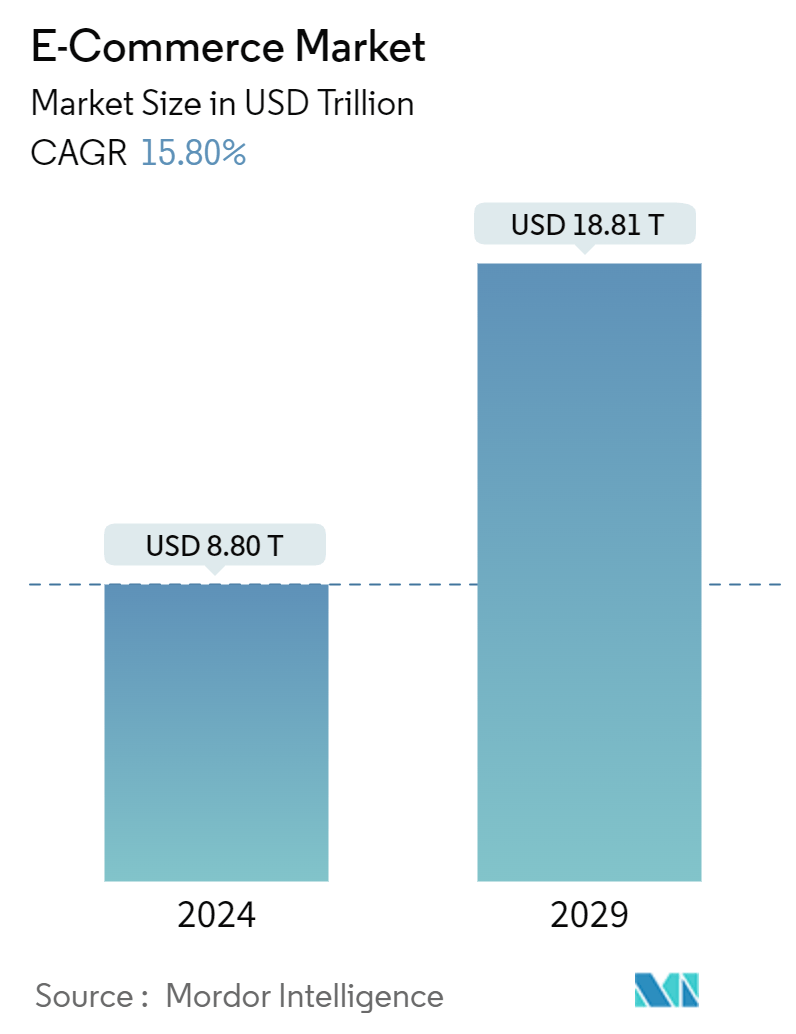
| Study Period | 2019 - 2029 |
| Market Size (2024) | USD 8.80 Trillion |
| Market Size (2029) | USD 18.81 Trillion |
| CAGR (2024 - 2029) | 15.80 % |
| Fastest Growing Market | Asia Pacific |
| Largest Market | North America |
Major Players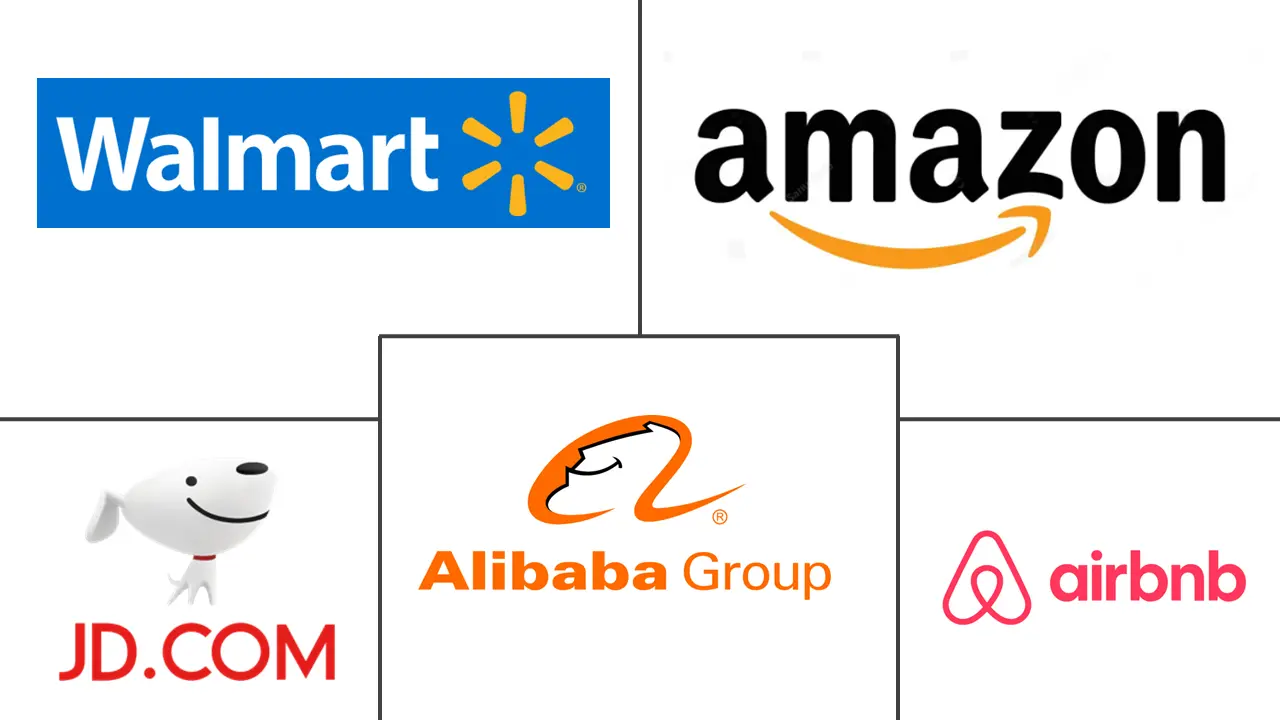
*Disclaimer: Major Players sorted in no particular order |
E-commerce Market Analysis
The E-Commerce Market size is estimated at USD 8.80 trillion in 2024, and is expected to reach USD 18.81 trillion by 2029, growing at a CAGR of 15.80% during the forecast period (2024-2029).
The global smartphone user population is increasing as the internet's penetration increases. Digital content, financial services, travel and leisure, and e-tailing, to name a few, are among the e-commerce possibilities available to the internet-connected client base, which is growing in popularity as internet usage rises. As a result, customers' technical knowledge is projected to impact market growth positively.
- Due to the lower cost of communication and infrastructure, established businesses and giant corporations are gravitating toward online business. E-commerce allows the organization to reach out to clients more efficiently, resulting in essential exposure to the firm. Online marketing tools such as Google advertisements and Facebook ads also drive e-commerce.
- Small and medium-sized businesses are expanding significantly, especially in India, China, South Africa, and Russia. Initiatives like Make in India and Start-up India have increased the number of start-ups that use the Internet marketplace to conduct business, boosting the market growth. The absence of deployment of technical infrastructure in rural parts of nations such as India, China, and Brazil is predicted to stifle market expansion.
E-commerce Market Trends
Growing Use of Smartphones is Driving the E-commerce Sales
- The growth of the e-commerce sector is expected to be supported by rising internet penetration and smartphone use. Consumer tastes change towards online buying as the internet and cell phones become more widely used. Consumers are reliant on digital devices now more than ever, and it is expected that mobile will inch closer to becoming consumers' preferred channel for online shopping within the next five years.
- Because of the growing use of smartphones and tablets worldwide, online retail continues to grow. People can shop on their phones thanks to technological advancements such as branded shopping apps, 5G Wi-Fi, and social shopping. It has become a powerful tool for retailers to increase sales, conversions, and loyalty, as well as track and mine consumer data for targeted marketing.
- However, as technology changes, many retailers are likewise having trouble figuring out how to successfully design a meaningful customer experience across many platforms. To improve the consumer experience, some of the major retailers have already launched specialized applications and e-commerce sites, while others anticipate that mobile users to adapt to their existing ecommerce sites.
- On several e-commerce platforms, brands are counting on virtual shopping and experimenting with augmented and virtual reality retail. Consumers have no limits in the metaverse, a 3D virtual reality. People from all across the world can engage with products in a metaverse, irrespective of their location.
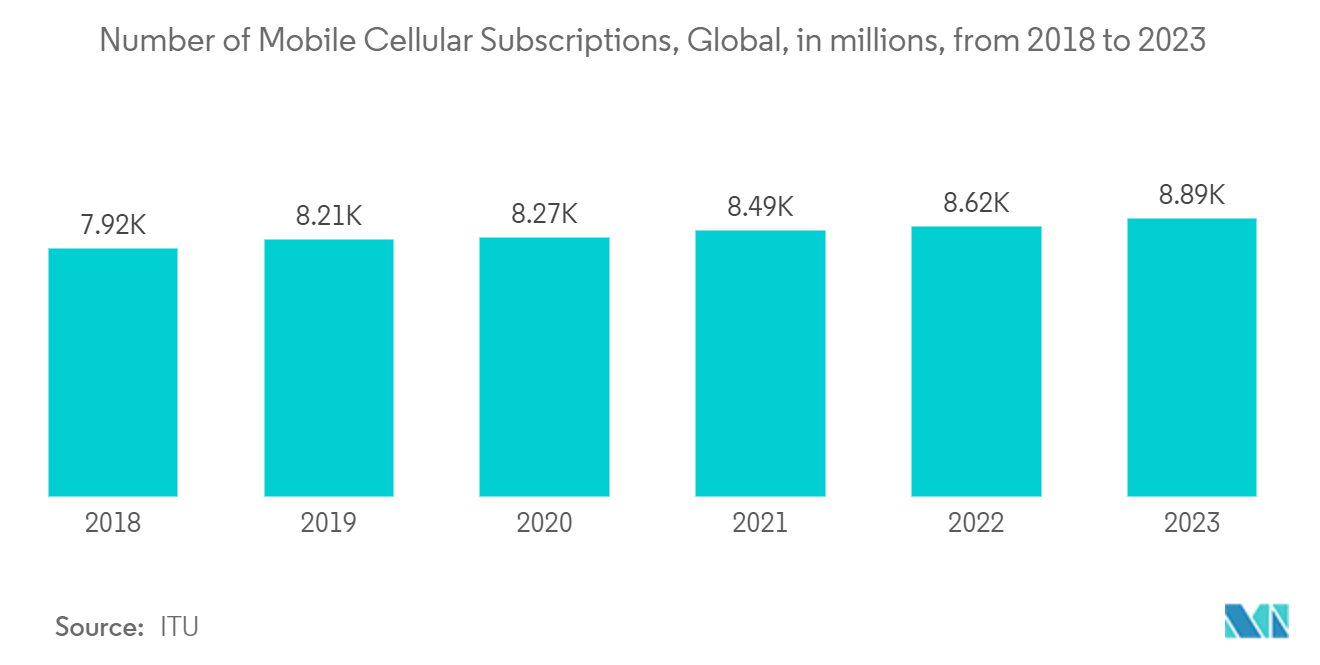
Initiatives by Government
- In the e-commerce market, increasing government and company initiatives to boost e-commerce sales is a prominent trend. The Union Ministry of India announced the government's intention to develop Bharat Craft, an e-commerce web in India modeled after Alibaba, a Chinese e-commerce platform. This app is designed to give a platform for MSMEs to market and sell their products, boosting the country's economic growth.
- At the national level, government bodies improve their policies and plan to ensure long-term viability and consumer protection. High environmental and social standards will improve the countries' environmental and social norms, which will affect the viability of the e-commerce business in these countries. Adopting harsh sanctions, for example, will make it harder for companies to enter the e-commerce industry. Still, adopting lenient sanctions will make it easier for businesses to do so.
- Moreover, The Digital India program, Unified Payment Interface (UPI), GeM, and other initiatives launched by the Indian government to encourage e-commerce have all significantly contributed to the sector's recent growth. The e-commerce sector is concentrating on local solutions to enter rural regions with the aid of government initiatives by fortifying the network of rural distributors and merchants and leveraging neighborhood distribution facilities as pick-up and drop-off locations.
- Also, on the fringes of the World Economic Forum Annual Meeting in Switzerland, 22 members of the WTO Joint Statement Initiative on e-commerce gathered to reaffirm their commitment to establishing a framework of rules to regulate the global digital economy.
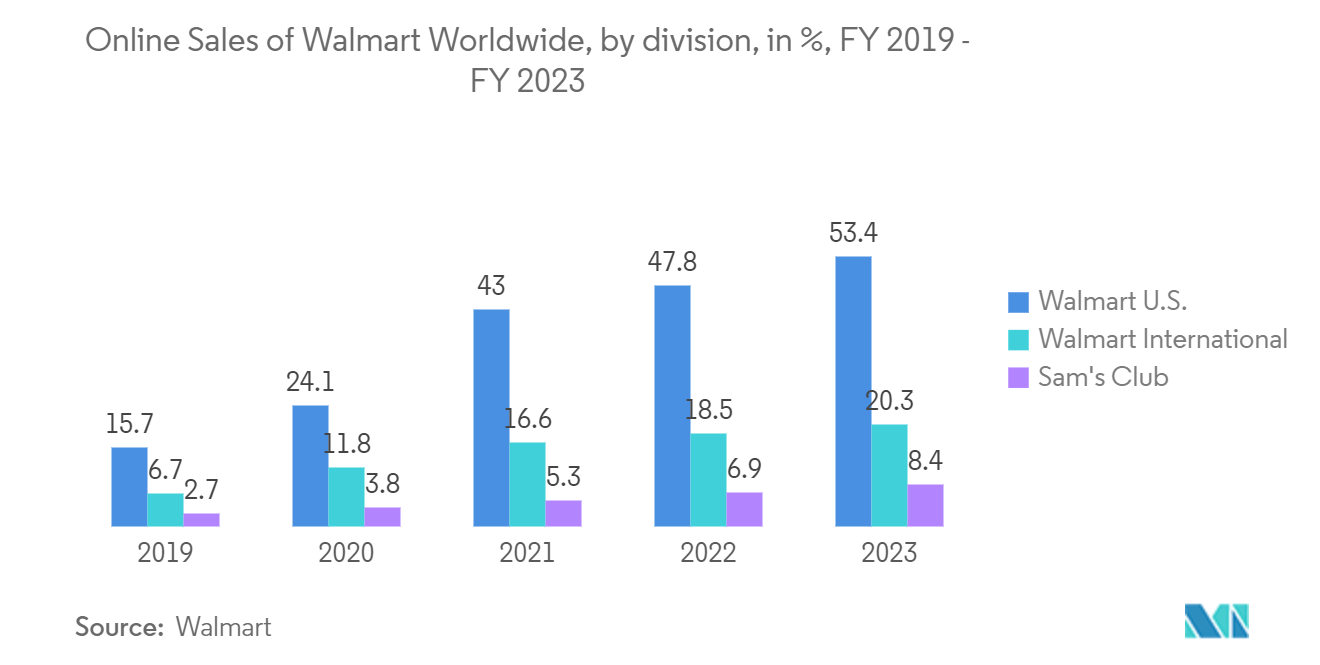
E-commerce Industry Overview
In the e-commerce business, many local and worldwide firms have expanded, resulting in fierce competition. Some of the key players are Amazon.com Inc., Alibaba Group Holding Limited, Walmart Inc., and Costco Wholesale Corporation. Product launches, high expenses on R&D, acquisitions, and partnerships, etc., are the growth strategies adopted by such companies to sustain the intense competition.
In June 2022, the introduction of Etsy Purchase Protection was announced by Etsy. In the unlikely event that an item did not match the item description, did not come, or did not arrive at all, consumers were to obtain a full refund through this for transactions made on Etsy's website.
In May 2022, Alibaba, which is a Chinese e-commerce company, expanded its Lazada marketplace into Europe. Lazada was to focus on local merchants rather than cross-border sales, such as AliExpress. Cainiao, Alibaba's logistics company, is new to Belgium. Alibaba's marketplace, AliExpress, is currently present in the European market. However, cross-border sales from China are AliExpress's most profitable source of revenue. Lazada instead focuses on local European sellers.
E-commerce Market Leaders
-
Amazon.com Inc.
-
Alibaba Group Holding Limited
-
Airbnb, Inc.
-
Walmart Inc.
-
JD.com Inc.
*Disclaimer: Major Players sorted in no particular order
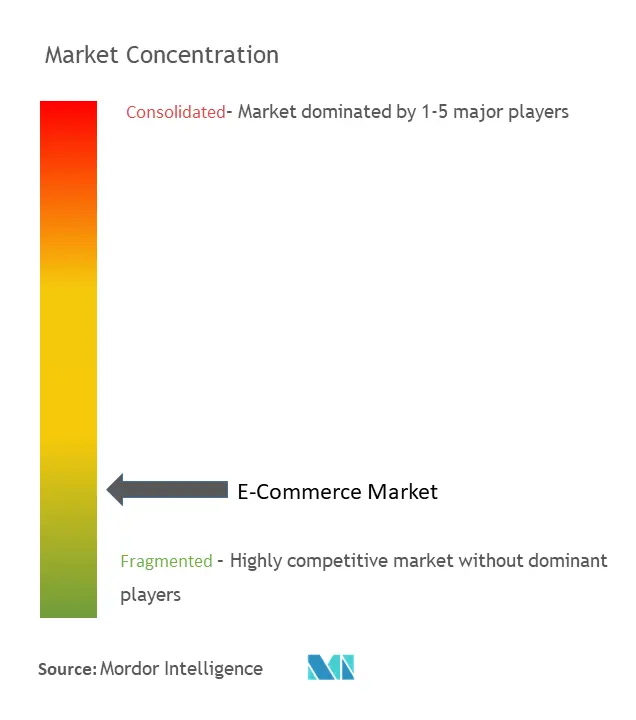
E-commerce Market News
- February 2023: In order to democratize online buying in the South Asian market, Amazon recently announced that the company is joining an Indian e-commerce initiative. The goals of Open Network for Digital Commerce (ONDC) by Amazon include allowing small companies to become digital and giving customers throughout the nation ease and choice, which are strongly linked with Amazon's vision and commitment to India.
- January 2023: Walmart launched a new e-commerce site targeting small and midsized enterprises and not-for-profit organizations with more than 100,000 products ranging from office supplies to automobiles and heating and air conditioning components. Moreover, Walmart's Business+ membership program offers free shipping and other perks.
E-commerce Market Report - Table of Contents
1. INTRODUCTION
- 1.1 Study Assumptions and Market Definition
- 1.2 Scope of the Study
2. RESEARCH METHODOLOGY
3. EXECUTIVE SUMMARY
4. MARKET INSIGHTS
- 4.1 Market Overview
-
4.2 Industry Attractiveness- Porter's Five Forces Analysis
- 4.2.1 Bargaining Power of Suppliers
- 4.2.2 Bargaining Power of Buyers/Consumers
- 4.2.3 Threat of New Entrants
- 4.2.4 Threat of Substitute Products
- 4.2.5 Intensity of Competitive Rivalry
- 4.3 Key Market Trends and Share of E-commerce of Total Retail Sector
- 4.4 Impact of COVID-19 on the E-commerce Sales
5. MARKET DYNAMICS
-
5.1 Market Drivers
- 5.1.1 Advancements in Technology
- 5.1.2 Initiatives by Government
- 5.1.3 Increasing Consumer Interest towards Convenient Shopping solutions
-
5.2 Market Challenges
- 5.2.1 Low Internet Penetration
- 5.2.2 Increasing Security and Privacy Concerns
- 5.3 Analysis of Key Demographic Trends and Patterns Related to E-commerce Industry in Key Regions (Coverage to include Population, Internet Penetration, E-commerce Penetration, Age & Income etc.)
- 5.4 Analysis of the Key Modes of Transaction in the E-commerce Industry (coverage to include prevalent modes of payment such as cash, card, bank transfer, wallets, etc.)
- 5.5 Analysis of Cross-border E-commerce Industry (Current market value of cross-border & key trends)
- 5.6 Current Positioning of Key Regions in the E-commerce Industry Globally
6. MARKET SEGMENTATION
-
6.1 By Type
- 6.1.1 By B2C ecommerce
- 6.1.1.1 Market Size (GMV) Estimates and Forecasts
- 6.1.1.2 By Application
- 6.1.1.2.1 Beauty & Personal Care
- 6.1.1.2.2 Consumer Electronics
- 6.1.1.2.3 Fashion & Apparel
- 6.1.1.2.4 Food & Beverage
- 6.1.1.2.5 Furniture & Home
- 6.1.1.2.6 Other Applications (Toys, DIY, Media, etc.)
- 6.1.2 By B2B ecommerce
- 6.1.2.1 Market Size (GMV) Estimates and Forecasts
-
6.2 By Geography***
- 6.2.1 North America
- 6.2.1.1 United States
- 6.2.1.2 Canada
- 6.2.2 Europe
- 6.2.2.1 Germany
- 6.2.2.2 United Kingdom
- 6.2.2.3 France
- 6.2.2.4 Spain
- 6.2.2.5 Italy
- 6.2.3 Asia
- 6.2.3.1 China
- 6.2.3.2 Japan
- 6.2.3.3 India
- 6.2.3.4 South Korea
- 6.2.4 Australia and New Zealand
- 6.2.5 Latin America
- 6.2.6 Middle East and Africa
7. COMPETITIVE LANDSCAPE
-
7.1 Company Profiles*
- 7.1.1 Amazon.com Inc.
- 7.1.2 Alibaba Group Holding Limited
- 7.1.3 Airbnb, Inc.
- 7.1.4 Walmart Inc.
- 7.1.5 JD.com Inc.
- 7.1.6 Rakuten Inc.
- 7.1.7 Inter Ikea Systems B.V.
- 7.1.8 Costco Wholesale Corporation
- 7.1.9 Flipkart
- 7.1.10 Best Buy Co. Inc.
8. INVESTMENT ANALYSIS
9. FUTURE OUTLOOK OF THE MARKET
** Subject To AvailablityE-commerce Industry Segmentation
E-commerce refers to selling clothing, electronics, furniture, books, cosmetics, and other items over the Internet. Companies that provide home delivery services, such as e-commerce and m-commerce, are included in this industry.
Retailers and their consumers conduct sales transactions using information technology, such as the telephone and the Internet, and merchandise is often delivered via mail or courier. Direct mailers that sell their merchandise and retail through online websites are also included in the e-commerce industry.
The e-commerce market is segmented by B2C e-commerce (beauty and personal care, consumer electronics, fashion and apparel, food and beverage, furniture, and home), B2B e-commerce, and geography (North America (United States, Canada), Europe (Germany, the United Kingdom, France, Spain, Italy, and the Rest of Europe), Asia-Pacific (China, Japan, India, South Korea, and the Rest of Asia-Pacific), Latin America, and the Middle East and Africa).
The market sizes and forecasts are provided in terms of value (USD) for all the above segments.
| By Type | By B2C ecommerce | Market Size (GMV) Estimates and Forecasts | |
| By Application | Beauty & Personal Care | ||
| Consumer Electronics | |||
| Fashion & Apparel | |||
| Food & Beverage | |||
| Furniture & Home | |||
| Other Applications (Toys, DIY, Media, etc.) | |||
| By Type | By B2B ecommerce | Market Size (GMV) Estimates and Forecasts | |
| By Geography*** | North America | United States | |
| Canada | |||
| By Geography*** | Europe | Germany | |
| United Kingdom | |||
| France | |||
| Spain | |||
| Italy | |||
| By Geography*** | Asia | China | |
| Japan | |||
| India | |||
| South Korea | |||
| By Geography*** | Australia and New Zealand | ||
| Latin America | |||
| Middle East and Africa |
E-commerce Market Research FAQs
How big is the E-Commerce Market?
The E-Commerce Market size is expected to reach USD 8.80 trillion in 2024 and grow at a CAGR of 15.80% to reach USD 18.81 trillion by 2029.
What is the current E-Commerce Market size?
In 2024, the E-Commerce Market size is expected to reach USD 8.80 trillion.
Who are the key players in E-Commerce Market?
Amazon.com Inc., Alibaba Group Holding Limited, Airbnb, Inc., Walmart Inc. and JD.com Inc. are the major companies operating in the E-Commerce Market.
Which is the fastest growing region in E-Commerce Market?
Asia Pacific is estimated to grow at the highest CAGR over the forecast period (2024-2029).
Which region has the biggest share in E-Commerce Market?
In 2024, the North America accounts for the largest market share in E-Commerce Market.
What years does this E-Commerce Market cover, and what was the market size in 2023?
In 2023, the E-Commerce Market size was estimated at USD 7.41 trillion. The report covers the E-Commerce Market historical market size for years: 2019, 2020, 2021, 2022 and 2023. The report also forecasts the E-Commerce Market size for years: 2024, 2025, 2026, 2027, 2028 and 2029.
What are the future trends in E-Commerce Market?
The future of e-commerce promises booming mobile shopping, seamless AR/VR experiences, and eco-conscious choices. Expect faster checkouts, social commerce integration, and AI-powered personalization driving customer satisfaction.
E-commerce Industry Report
The global e-commerce market is experiencing significant growth, driven by an increase in internet usage and smartphone adoption, which has made online shopping a more convenient option for consumers around the world. This market encompasses B2B, B2C, and consumer-to-consumer segments, providing a diverse range of products and services, from home appliances to cosmetics. The rise in consumer trust in online transactions is supported by secure digital payment systems and the advancement of technologies. Moreover, the expansion of cross-border trade has enabled businesses without physical storefronts to access international markets. As e-commerce platforms continue to evolve and consumer preferences for online shopping increase, the market's growth trajectory is further bolstered by technological advancements, government initiatives, and the increasing importance of online marketing. Statistics for the Global E-commerce market market share, size and revenue growth rate, created by Mordor Intelligence™ Industry Reports. Global E-commerce analysis includes a market forecast outlook and historical overview. Get a sample of this industry analysis as a free report PDF download.



